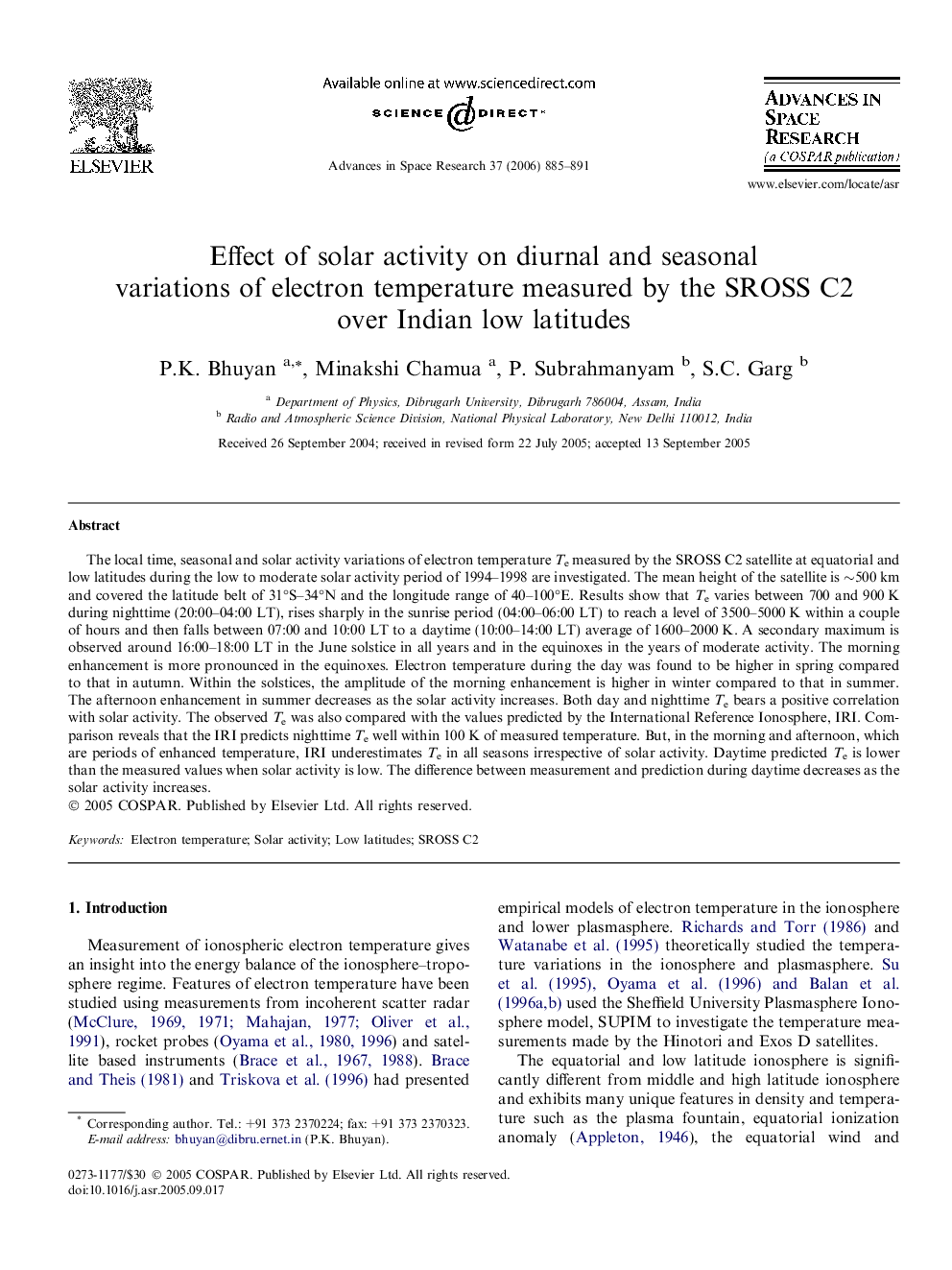| Article ID | Journal | Published Year | Pages | File Type |
|---|---|---|---|---|
| 1769228 | Advances in Space Research | 2006 | 7 Pages |
The local time, seasonal and solar activity variations of electron temperature Te measured by the SROSS C2 satellite at equatorial and low latitudes during the low to moderate solar activity period of 1994–1998 are investigated. The mean height of the satellite is ∼500 km and covered the latitude belt of 31°S–34°N and the longitude range of 40–100°E. Results show that Te varies between 700 and 900 K during nighttime (20:00–04:00 LT), rises sharply in the sunrise period (04:00–06:00 LT) to reach a level of 3500–5000 K within a couple of hours and then falls between 07:00 and 10:00 LT to a daytime (10:00–14:00 LT) average of 1600–2000 K. A secondary maximum is observed around 16:00–18:00 LT in the June solstice in all years and in the equinoxes in the years of moderate activity. The morning enhancement is more pronounced in the equinoxes. Electron temperature during the day was found to be higher in spring compared to that in autumn. Within the solstices, the amplitude of the morning enhancement is higher in winter compared to that in summer. The afternoon enhancement in summer decreases as the solar activity increases. Both day and nighttime Te bears a positive correlation with solar activity. The observed Te was also compared with the values predicted by the International Reference Ionosphere, IRI. Comparison reveals that the IRI predicts nighttime Te well within 100 K of measured temperature. But, in the morning and afternoon, which are periods of enhanced temperature, IRI underestimates Te in all seasons irrespective of solar activity. Daytime predicted Te is lower than the measured values when solar activity is low. The difference between measurement and prediction during daytime decreases as the solar activity increases.
